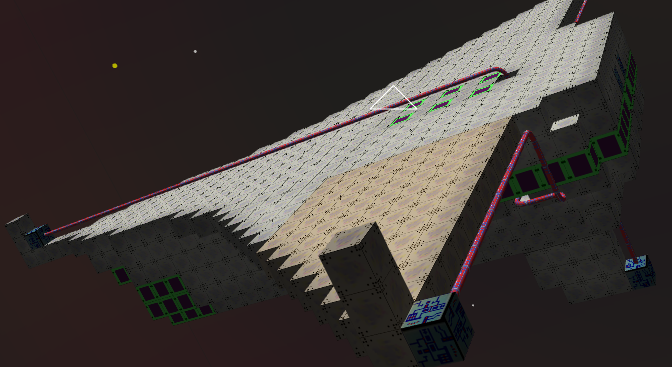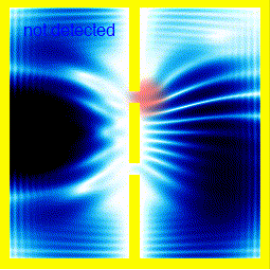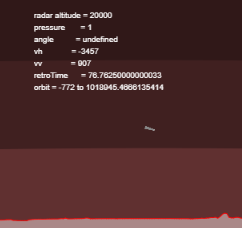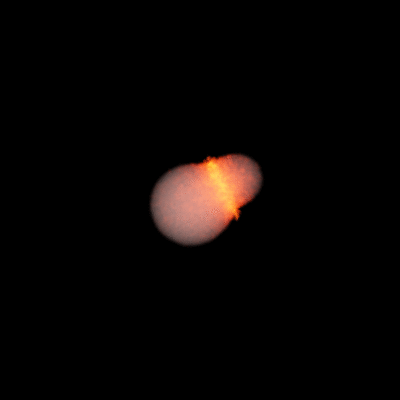 So. You're writing a science fiction book, or game or something, and you've got people going to other star systems.
So. You're writing a science fiction book, or game or something, and you've got people going to other star systems.
The question is "how big should the spaceship be?"
This article simply tells you how big to build your spaceship if you want to go to another star system.
It's tempting to imagine that all the problems would be solved by advanced technology, but perhaps not ...
At the end of the day, all we have to make things with are atoms, and there are only so many ways to arrange atoms. We know the energy density of hydrogen being used in a fusion reactor. We also can guess that there will be practical limits to how efficient a fusion engine might be made.
Anyway, this guide will let you know how heavy to build the spaceship when it's leaving our solar system.
There are seven things that you have to decide:
How far are you going?
How many light years is your destination:Common examples:
- Proxima Centauri is 4.25 light years away. It has at least one exoplanet. It is thought unlikely that this exoplanet is habitable.
- There are a large handful of known exoplanets around stars between 10 and 20 light years away, and it is plausible that some of these are habitable. There may be nearer habitable exoplanets that we don't know about.
- We don't know enough about most planets to know that they are habitable --- but many planets we know are very unlikely to be habitable.
What percentage of the speed of light will you travel?
%
If you travel quickly, you need more fuel to get up to speed and slow down. If you travel too slowly, the fuel requirements to keep humans alive for that long might be high.
What are you going to arrive with?
Once you've placed yourself in orbit at your destination, how much will your landing capsule weigh? You will need life support, maybe a heat shield, maybe a reactor, maybe batteries.The international space station is 400 tons, for starters. That has 6 people on board. It also doesn't need to be able to cope with the eventualities of landing on a planet that nobody's even seen properly.
How many tons of material will arrive with you:
How many people will be on board and awake during flight?
Each person eats around 2000 calories of food per day. I assume in space with not a lot to do, you need less, but it's unlikely that people would be happy with less than 1000 calories per day.Note that this is only the number of people awake and alive during the main part of the journey. If people go into some sort of suspended animation, or if you only transport frozen embryos, put zero.
Number of people on board:
Energy Source
The most efficient thing the ship could burn is antimatter + matter. However, there are difficulties with this: It may never be possible to make enough antimatter to fuel a ship. It also may not be possible to burn it for thrust efficiently or safely enough. If all you can make is anti-hydrogen, you may have problems that you can't store it for long: if you put it in a regular container, it'll react with the walls, and it does need to be in a container, because it's hard to confine it for long otherwise. Anti-helium is the same. Anti-lithium, on the other hand, might work: You could make blocks of metalic anti-lithium, and suspend them in space with electric fields. The problem is that it might never be possible to make enough anti-lithium safely and efficiently and in enough quantity to be useful.It's also not clear that you can use antimatter to drive a ship efficiently. It annihilates as pairs of gamma rays, and to use that efficiently, you would need to persuade both gamma rays to end up going the same direction. It might not be possible to build a gamma ray deflector that makes this work.
The next possibility is nuclear fusion. Mankind can *almost* build fusion reactors, and the technical problems seem to be just engineering issues, albeit difficult ones.
There's no guarantee that mankind will ever know how to build rocket engines that use nuclear fusion, but it seems a lot more likely than antimatter.
The next possibility is nuclear fission, which we definitely know how to build. As a rocket, nuclear fission isn't spectacularly efficient, because the exhaust temperature is limited to what the rest of the rocket engine can cope with, but with enough engineering, it may be possible to improve on this.
Energy source:
Thrust Efficiency
It's not realistic to imagine that 100% of the energy released in a fusion reaction would go to accelerating the exhaust of the reaction products --- which is what would be needed for 100% efficiency. Another thing is that if you have 100 tons of your spaceship to dispose of for thrust, it won't all be fuel. The containers the fuel is in has to be counted in the efficiency.Typical efficiencies achieved as of now are:
- Current chemical rockets: 60% (according to wikipedia)
- Current nuclear rockets: It's hard to say, since the engine emitted hydrogen, but burnt fission fuel, but the achieved exhaust speed of around 10km/s is equivalent to an efficiency of .00003 %
Thrust efficiency:
%
Food Efficiency
To grow food for the people on board, the fuel needs to be burnt, energy extracted, perhaps as electricity, then this needs to go to power something that makes food --- perhaps via LEDs that shine on plants that then get eaten.None of this would be 100% efficient, so:
Food efficiency:
%
Go
Other Articles:

|
The double slit and observersA look at the double slit experiment. The first half is meant to be a clear explanation, using simulations. The second half discusses some of the philosophy / interpretations of quantum mecahnics. |

|
Mars LanderAn interactive simulation of a Mars Lander trying to land on Mars. The term "interactive" here means that you have to write the software, in Javascript, that will land the probe. |

|
Moon FormationA Kotlin N-Body code, and lots of animations of the collision between Earth and a hypothetical Theia that people think created the moon. |